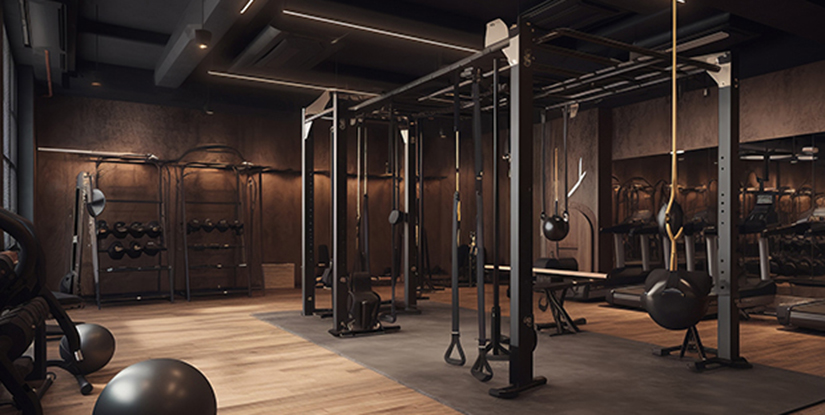Best Fitness Equipment: Top Picks, Buying Guide & Home Gym Setups

Introduction
Choosing the best fitness equipment for a home or commercial setting demands clarity on goals, space, and budget. This guide outlines high-impact options across cardio, strength, and functional training, and provides practical selection, maintenance, and setup advice for effective, safe workouts.
Top Categories and Recommended Equipment
Cardio Machines
Cardio equipment is essential for cardiovascular health and calorie burn. Key options include treadmills, stationary bikes, rowers, and ellipticals. Select based on impact tolerance, training goals, and space.
- Treadmill — Best for running specificity and interval training; choose models with solid cushioning and a reliable motor.
- Stationary Bike — Low-impact, excellent for endurance and HIIT; consider upright versus recumbent for comfort.
- Rowing Machine — Full-body cardio with strength benefits; ideal for compact spaces and time-efficient sessions.
- Elliptical — Low-impact alternative that mimics running mechanics; good for joint preservation.
Strength Equipment
Strength training builds muscle, increases bone density, and boosts metabolic rate. Core pieces include free weights and multi-station rigs.
- Adjustable Dumbbells — Space-efficient and versatile for progressive overload.
- Barbell and Weight Plates — Fundamental for compound lifts; select appropriate knurling and plate type.
- Power Rack — Safety and versatility for squats, presses, and pull-ups; includes spotter arms for solo training.
- Kettlebells — Functional strength and conditioning; valuable for swings, Turkish get-ups, and dynamic work.
Functional and Accessory Equipment
Accessories round out training capabilities and improve mobility, recovery, and programming variety.
- Resistance Bands — Portable, affordable, and useful for mobility and variable resistance.
- Medicine Balls and Slam Balls — For power development and explosive conditioning.
- Yoga Mat — Essential for floor work, stretching, and stability drills.
- Plyo Box — For jump training and step-ups; choose stable, non-slip surfaces.
How to Choose the Right Equipment
- Define your goals — Prioritize equipment that aligns with strength, hypertrophy, endurance, or weight loss objectives.
- Assess space — Measure ceiling height, doorways, and floor area; foldable or compact options save space.
- Budget planning — Invest preferentially in items you will use most; start with multi-use equipment like adjustable dumbbells or a power rack.
- Quality and warranty — Inspect frames, motors (for cardio), bearings, and warranties to minimize downtime and replacements.
- User profile — Consider age, injury history, and experience to match equipment ergonomics and adjustability.
Space and Budget Considerations
Optimizing space and budget requires trade-offs. For tight spaces, prioritize compact, multi-functional pieces. For limited budgets, opt for resistance bands, kettlebells, and adjustable dumbbells to provide wide exercise selection at low cost. Allocate budget for flooring to protect subfloors and reduce noise.
Maintenance and Safety
- Regularly inspect cables, bolts, and moving parts; tighten and lubricate per manufacturer guidelines.
- Keep electronics clean and dry; avoid exposing motors to dust and moisture.
- Use proper lifting technique and safety attachments like spotter arms or safety straps for heavy lifts.
- Replace worn-out grips, bands, or padding to prevent injury.
Sample Home Gym Setups
- Starter Home Gym — Adjustable dumbbells, resistance bands, yoga mat, stability ball. Ideal for compact apartments and beginners.
- Intermediate Setup — Barbell with bumper plates, power rack, adjustable bench, kettlebells, and a rower or bike for conditioning.
- Advanced Home Gym — Commercial treadmill or assault bike, full rack, Olympic bar, full plate set, plyo box, and dedicated flooring.
Conclusion
Selecting the best fitness equipment begins with clear objectives, realistic budgeting, and an honest assessment of space. Prioritize durability, versatility, and safety to create an environment that supports consistent training and long-term progression.
FAQs
1. What is the single most versatile piece of equipment?
Adjustable dumbbells — they allow a wide range of exercises in a compact footprint.
2. Is cardio equipment necessary at home?
No, but it improves cardiovascular fitness and complements strength training; choose based on goals.
3. How much space do I need for a power rack?
Allocate at least 4' x 6' footprint and consider ceiling height for overhead lifts.
4. Are adjustable dumbbells as effective as standard sets?
Yes, for most users they provide equivalent progressive overload and space savings.
5. How often should I service cardio machines?
Inspect monthly and perform manufacturer-recommended servicing yearly or after high usage.
6. What flooring is best for a home gym?
Interlocking rubber tiles or thick EVA mats for weight areas; hardwood-safe mats under cardio machines.
7. Can resistance bands replace weights?
They supplement training well and can replace weights in many cases, but they differ in resistance curve and maximal loading.
8. How should I prioritize purchases on a tight budget?
Start with adjustable dumbbells, a bench, and resistance bands; add a barbell and rack as needed.
9. Is a rowing machine worth the investment?
Yes, for efficient full-body conditioning and low-impact cardio it provides high value per square foot.

